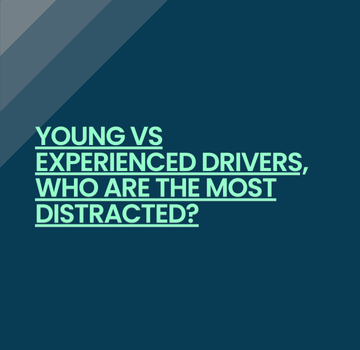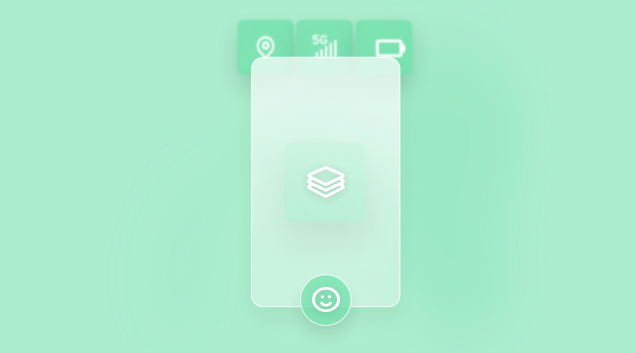|
Talking Telematics is a series of interviews between Philippe Moulin, CEO of DriveQuant, and insurance insiders. The topics are related to telematics and the benefits of the technology for the motor insurance industry. The following interview is based on a podcast recorded by SCOR. Graham Johnston, Global Product and Innovation Manager at SCOR, interviews Philippe Moulin, CEO of DriveQuant. The transcription has been edited for readability. |
Graham: Hi everyone. My name is Graham Johnston. I work as Global Product and Innovation Manager at SCOR. Over the last few months we've been working very closely with Philippe and his company to develop a partnership that will help our sales offer telematics solutions to their clients. Phillipe, can you introduce yourself?
My name is Philippe. I am an engineer with a PhD in applied mathematics. My background is quite technical. I used to work for a research institute called IFPEN in France for the automotive industry. I founded DriveQuant in 2017 when working on the analysis of driving data for eco-driving purposes.
Now, the company is focused on the motor insurance industry. We help insurers launch connected car programs based on smartphone telematics. What we do is that we use smartphones to collect the driving data and also to coach the drivers for prevention purposes.
Graham: Thank you Philippe. It's clear that your company has two objectives. Both are aimed at helping the insurers. The first one is improving road safety and the other one is reducing the environmental impact of mobility. Clearly, those two objectives are linked and we've spent a lot of time together discussing those.In this first episode, I'd like to focus on road safety and in particular distracted driving. Distracted driving has become a very big topic in the telematics world over the last four or five years.
SCOR has just published in its global consumer study some statistics that show that consumers all around the globe lists “being distracted” as the number one factor that puts drivers at most risk of having an accident. It’s perhaps not so surprising but it is interesting that across the world we saw this pattern. And Philippe, I know that your company DriveQuant has published a report on distracted driving and perhaps this would be a good time for you to share some insights from that research.
The advantage of smartphone based telematics is that it's possible to measure what happens in the smartphone. For sure, distracted driving can take many forms. In our report, we focus on the use of smartphones while driving. When you're using your phone to call someone, to launch an app, or to send text messages. It means you're distracted because you're not watching the road, you’re not hearing what’s going on around you, your hands aren’t on the wheel, and lastly your brain is not fully focused on driving. All of these factors can lead to accidents that could be avoided.
Graham: So what do you think we can do to change some of these disturbing habits? Is there a way we can persuade people to drive more safely?
For sure, it’s what we are trying to do. But let's be honest. Changing driver habits is difficult: it takes time and cannot be achieved just by asking drivers to download and use an app. It's not enough. So you need to find the right incentive and to show the right information to the drivers to encourage them to develop new driving habits while losing their old ones. So the first step is really to collect, analyse and understand the data.
We've collected and analysed information over six months from real connected insurance customers using our solution. This is real life data showing the habits of 8 000 drivers. To analyse what's happening, we split these drivers into two different groups: Group A consists of novice drivers, young drivers with less than four years of experience, and Group B is more diverse in terms of driving experience, it's made up of individuals across various age groups and experience levels. We analysed the difference of driving behaviour between the two groups.
Graham: I think this illustrates the power of smartphone technology. So you created these two groups: one group which had just nervous drivers and the other group which had individuals from across the age bands. You compared the driving habits between the two groups. And the data is immense. Tell us more on the indicators you used to measure the use of smartphones while driving.
Smartphone telematics gives access to many indicators. We chose to focus on two main indicators: the duration and frequency of phone calls and the frequency of unlockings. We assess the unlocking frequency by measuring the screen light. When the light varies in intensity, it means that people unlock their screen to use a mobile app, to read or write a text message or to dial in a number. We measure the frequency, how often this happens based on several reference points such as: per hour of driving, per 100 kilometres, per ten trips. Regarding phone calls, we made a similar analysis. What we did is we calculated how many minutes are spent on a call for an hour of driving time and for 1 000 kilometres.
Graham: Let's take this step by step. We can start with phone calls. What were your main findings in regards to people making phone calls?
Well, we found in our study that drivers from Group B, so the mixed group with more experience, have more risky driving habits than Group A, that only includes young drivers. For example, we measured that 80% of Group B drivers do ot use their car’s hands free system, compared to only 50% of drivers in Group A. If you compare the duration of phone calls, once again, we found that Group B spends on average three times more time on calls. On average, they dial or respond to a call once every twenty kilometres. This is four times more than Group A.
Graham: You know that's really fascinating. It shows the power of your analysis and it feels like you're uncovering more and more unknown facts about driving behaviours. It’s fairly unintrusive because it is recorded on the smartphone. From what you've seen so far, what's been the most surprising finding?
I think it’s that drivers do not use the handsfree system of their car to make phone calls and that most phone calls were indeed initiated by the driver, and not the other way round. Clearly, most of the time, the cause of distraction isn’t external, you answer a phone call, but rather internal, you make a phone call. There's no excuses because it’s a deliberate decision of the driver. This is the kind of thing that we think is very interesting to reveal because it says something about how people really drive and you can act on those behaviours.
Graham: Indeed, based on this data, insurers can launch a prevention program to encourage people to use the hands-free system of their car. This shows that something you might not have expected to be true is indeed true. Now, let's move on to another aspect of phone distraction: screen unlockings. What did you find?
To start with, frequent unlocking is a strong sign of a distracted driver. It means that the driver is thinking about something else. Group A, the novice young drivers, shows better overall driving behaviour which is a little bit surprising. Group B, the general group, unlocks around twice more often than Group A, and almost eight times per 100 kilometres. Plus, all Group B drivers unlocked their phones at least once per trip over ten trips. This performance, if we can call it like that, is only achieved by the third quartile of Group A.
In Group A, 10% of drivers never unlock while only 2% of drivers from Group B never unlock. That’s a huge difference. Of course a quick look at your phone may not seem like a big deal but it significantly raises the risk of accidents. Remember if you look at your smartphone for 2 seconds while driving at 20km/h, you cover a distance close to eleven metres without being aware of what happens on the road. It may seem okay but when you drive at 130km/h, the distance covered by the car is 72 metres. It’s a long distance. So the impact is huge if you look at your screen even for 2 seconds. The consequences can be dramatic.
Graham: It makes me think about a road safety campaign here in the UK. It says that speed kills and well the faster you drive, the more distance you travel and the more damage you can cause in case of accidents. So Philippe, you also were able to compare the driving habits in the city compared to the driving habits on the highway. What did you find there in terms of distracted driving?
We found that phone use at the wheel is more common in urban areas where people drive slower, at speeds under 30 km/h. This is true for the two groups of drivers. We also found that drivers are less careful in urban areas, which is probably caused by a lower risk perception. I live in urban areas so I see that many times in my daily life. The urban context does minimise the risk of damage to the driver and the car itself but it's a real problem for the other users of the road like pedestrians, bikers and motorbikes.
We know that 74% of deadly accidents happen during short or daily trips so reducing phone use is a matter of caring for and protecting those around, not only the driver. Even using the smartphone when the vehicle is stopped, which is very common in cities because of stop signs and red lights, can have disastrous consequences.
Graham: You know these research findings on their own are fascinating. It generates many questions but there are actionable actions for insurance companies so let's finish up our conversation today by talking about the implications and possible actions for insurance companies. How can insurers use these data from smartphones and the technology that you offer to promote more conscientious driving and to improve their products and services ? Because clearly distracted driving is something that we need to eradicate and insurers have a part to play.
In fact there are a lot of things insurers can do with mobile telematics insights. For example, with the data, insurance companies can customise their services and adapt their offerings based on the distraction profiles of the insured. There are several actions that can be taken. A good example is pricing with clearly identified risk profiles. As I said earlier, it’s possible to identify groups of drivers that have very different habits. For the insurers, it is possible to adapt the price to better reflect the different driving styles behind the wheel.
Of course another thing that can be done is prevention. That's very important. The first thing is to make the drivers aware of their behaviour. It's very important to be transparent. The indicators can be used for advice and prevention messaging. The messages can be customised and really adapted to the driver’s driving style and be used in the context of driving challenges for example. Insurers can organise challenges to promote good and safe driving. And with smartphone telematics insurers can launch connected insurance products including Pay-As-You-Drive and Pay-How-You-Drive programs and combine them with prevention.
It's very interesting for the insurers because it gives them the opportunity to measure the distraction of their connected customers but also define the risk profile of their portfolio and provide a lot of additional connected services including driving tips and crash detection. All of this benefits insurers, drivers and eventually road safety. It’s the mission that guide us at DriveQuant.
Graham: Well, thank you Philippe. I'm afraid we’re running out of time. Thank you everyone!



![[2025 Edition] The Guide to Connected Insurance](https://blog.drivequant.com/hubfs/7-%20%5BEdition%202025%5D%20Le%20Guide%20de%20lAssurance%20Connect%C3%A9e.png)
